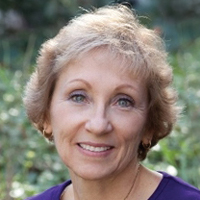Valerie Neff Newitt
June 2018—Testing for anti-müllerian hormone got a boost in 2017 when the year began and ended with the FDA clearing the first two fully automated AMH assays from Roche and Beckman Coulter.
Roche’s Elecsys AMH assay, cleared in January 2017, uses a bovine antigen and determines a value in 18 minutes. Beckman Coulter’s Access AMH immunoassay, cleared in November, uses a recombinant human antigen in the calibrators and determines a value in about 40 minutes. AMH helps to assess ovarian reserve and is used to titrate gonadotropin in stimulated treatment.
“AMH testing has been a huge advance in the field of reproductive medicine,” says Sara Barton, MD, reproductive endocrinologist at the Colorado Center for Reproductive Medicine in Denver. Before AMH testing, the traditional approach to determining ovarian reserve was day-three hormone assays, which measure follicle-stimulating hormone, luteinizing hormone, and estrogen on the third day of a woman’s menstrual cycle. “Those have a long and storied history with fertility and lots of data to suggest impact on egg quality and in vitro fertilization,” Dr. Barton says. “But the problem with using only day-three hormone tests is by the time the FSH is abnormal, the prognosis for patients is compromised. They are often in perimenopausal transition. So while it offers an accurate identification of women with poor prognosis, it’s already too late to help some of them.” AMH is different, she says, because for most women the levels change before changes can be seen in day-three tests.
Lack of an international standard for AMH testing remains a problem, however, and work to establish one is underway.

Dr. Veve
Specimens for the new assays can be drawn at the same time as those for day-three hormone tests. “AMH remains fairly stable over the menstrual cycle. It is not like estrogen or progesterone that fluctuates wildly depending on the day of the month,” says Robert Veve, MD, laboratory medical director at US Specialty Labs, San Diego. “Some studies have shown a slight variability, but not enough to affect the interpretation. Low is low, high is high,” he says.
Maria Doukakis, MLS(ASCP), CLT (NYS), laboratory manager at Reproductive Medicine Associates of Connecticut, and colleagues brought in the Roche automated AMH assay as soon as it was cleared. She credits Reproductive Medicine’s founder and medical director Mark Leondires, MD: “With his persistence, RMACT was one of Roche’s first IVF accounts to go live.”
“Until then, we were sending out our AMH testing. However, the preparation of the specimen and the stability were questionable,” Doukakis says. “Specimens had to be shipped frozen and light protected. We had no way of knowing what state they were in when they arrived at their destination.”
Bringing the test in-house and validating it went smoothly, she says. “Our go-live process included sending 50 test specimens to another laboratory also about to go live with the assay. The comparison of results from both labs met the requirement for AMH to be validated, verified, and accepted without the need for retesting,” Doukakis says.
The Colorado Center for Reproductive Medicine, too, switched from AMH testing performed in-house to the automated Roche assay. “The biggest advantage to us has been the time savings and the ability to run the test daily,” says Karen Maruniak, MLS(ASCP), clinical laboratory manager at CCRM. “Before, we had to batch the manual test, which took three-and-a-half hours to run.”
US Specialty Labs waited for Beckman’s Access automated assay to bring AMH testing in-house. “The older test, with so many hands-on responsibilities, opened the door to errors,” Dr. Veve says. “You could introduce variability into any of those many steps, affecting the result of the assay. It is one of the main reasons why so much lab-to-lab variability was observed using the old assay. Everything was operator dependent.”
In comparison, he adds, “The only thing the tech has to do now, besides the appropriate maintenance on the machine and setting it up the right way, is load the sample onto the analyzer. It eliminates all of that potential human and environmental error.”
The laboratory had worked with the test for about six months before the FDA issued its clearance. “Sample stability is excellent,” Dr. Veve says. “One study I had read earlier suggested that if you leave a sample out at room temperature, or if you spin the specimen down incorrectly, you will still get very similar results across test runs. We did a lot of research on it—ran thousands of samples before bringing it in. We ran samples at minus 20 degrees and plus 20 degrees and we couldn’t break it. We still showed variability between the results of less than four percent. That’s really low.” The stability studies he and colleagues did and those in the literature show the assay to be “rock solid,” he says, adding, “The only surprise I’ve had pertaining to the assay is how consistent the results really are.”

Maruniak
Maruniak of CCRM also reports impressive precision from the Roche assay. When it used the older test method, CCRM ran everything in duplicate. “We would run a full six-point calibration curve with each run and we would accept our patient replicates within 15 percent coefficient of variation in order to accept an answer. That is quite a bit higher than what our precisions are now using our automated analyzer.”
After nine CCRM centers switched to the automated AMH assay on the Roche analyzer, they did a split sample comparison to determine the assay’s performance level. “We prepared samples, split them up, and sent them out among us,” Maruniak says. “Each center handled them the same way and sent the data back to me. The CVs for those were 6.8 percent on one, 8.2 percent on another, 6.8 percent on the third, 10.4 percent and 6.4 percent on two others. They were much lower than 15 percent, and on nine different instruments in nine different locations. If I had any qualms about performance, that really validated it for me. It is a very solid assay.”
Users say the Roche and Beckman Coulter assays detect extremely low and high levels of AMH (about 0.03 to 23 ng/mL) and produce very little within-patient variability or lab-to-lab variability when using the same assay.
They also find the tests to be cost-effective. “The savings in tech time that goes into running these assays on an automated platform versus a manual platform is dramatic,” Maruniak says. Manufacturers have estimated that using the automated tests can cut laboratory costs by 16 percent or more over typical manual tests for assessing ovarian reserve.
Users agree that an international standard on which to calibrate results is urgently needed. “Lack of standardization is a huge problem,” CCRM’s Dr. Barton says, “because the utility of AMH is to determine how women are going to respond to fertility medication during fertility stimulation of IVF or intravaginal insemination procedures. It is one of the key components of dosing decisions. If you have someone who comes from another clinic and their AMH is run on a different assay and it refers to a different scale, you can’t dose them appropriately. You could under- or over-shoot.”
For that reason, CCRM requires every patient to be retested for AMH in its own laboratory. “If someone comes in with a report of AMH levels from an outside lab using a different assay, we don’t trust it,” she says. But she has begun to see more standardization. “When we re-run tests, now they are often similar. In the past, prior to FDA approval, there were a lot of different assays, and there was a big variation in the way those assays were reporting AMH.”
Maruniak, too, is cautious. “Understanding an AMH from a different method, without an international standard that everything is calibrated against, is very difficult. It is like speaking with a different vocabulary. Whereas if we had a standard, everything would be calibrated against it and you would be much more likely to fully understand the values.”
This is a warning to clinicians about how the values can be used, Dr. Veve says. He notes, for example, that Roche’s companion diagnostic for dosing gonadotropins is based on the particular value obtained with the Roche assay. “So if the results are not comparable between the two assays, clinicians using Beckman results may overdose or underdose the gonadotropin using the recommended dosage associated with the value on the Elecsys assay.” Some studies have shown little variability between the two automated assays, he says, “and yet one fairly large lab study showed that results from the Beckman Coulter assay were reading about 10 percent higher than the Elecsys” (Iliodromiti S, et al. Hum Reprod. 2017;32[8]:1710–1715). It is just one study, he says; others suggest they are comparable. “Who do you believe? You have to make sure you are comparing apples to apples.”
Dr. Veve says the only way to solve the problem is by establishing an international standard for the calibrators used in all tests. “With a standard calibrator, if a true specific value should be 50, and I get 40 on the Roche assay and 60 on the Beckman assay, I can adjust the instruments so that both machines read 50. And everyone is in agreement. There is an urgent need for that. We need to know what ‘true’ is.”
Achieving a standard, Maruniak says, will take an outside organization and a strong voice from the scientific/medical community. “We need to say, ‘These values are all over the place. Let’s get a more standardized approach.’ This is confusing for clinicians and patients. We need to start voicing this concern, but so far only a few are sounding the alarm. It’s not hot on the radar yet.”
Jackie Ferguson, PhD, senior scientist in the biotherapeutics division at the National Institute for Biological Standards and Control, in Hertfordshire, England, says efforts are underway to establish the first World Health Organization standard for AMH. “NIBSC has an ongoing project to develop an international standard for AMH, and we aim, this year, to evaluate a preparation by immunoassay methods through an international collaborative study.”
The project is complex, she says, and will require the participation of manufacturers and others. “We hope that this will contribute to defining a suitable approach to harmonizing AMH immunoassays, one that fully considers the clinical application of AMH measurement and the impact on patients.”
One unknown is how the use of other hormones and contraceptives affect AMH. Day-three tests, for example, are affected by exogenous hormones, so clinicians cannot accurately check the FSH levels of a woman on oral contraceptives. While early studies of AMH point to it being unaffected by oral contraceptives and other hormones women might be taking for other fertility-related reasons, clinical evidence suggests otherwise.
“What we are seeing clinically is that AMH can be slightly lowered by use of hormones,” Dr. Barton says. “If a patient on hormones is interested in preserving her fertility—perhaps freezing her eggs—but she’s not experiencing infertility, can we check the AMH while she’s on those hormones or not? When we stop contraception for a patient who is not desiring pregnancy in order to get these labs, we put her at risk for an unintended pregnancy.” Thus, Dr. Barton says, more data are needed on the relationship between oral contraceptives and other forms of contraception and their effect on AMH.
Also unclear is the relationship between ovarian reserve and women who do not experience infertility, she says. “It is always concerning to get a very low AMH level in a woman who has never attempted to get pregnant but who may have checked her AMH level because she is getting older and wants to know if she is going to be able to have children. At this point I basically counsel patients that AMH is almost useless in determining if they are fertile or infertile. AMH is not a fertility test. It is a test for ovarian reserve, and ovarian reserve doesn’t equal fertility. We just know that for women who are experiencing infertility, ovarian reserve is an important component of their prognostic outlook.”

Dr. Barton
Ovarian reserve indicates the number of eggs, and nothing more. “It tells us nothing about quality, nothing about whether those eggs have the ability to be fertilized by sperm or implanted into the uterus,” Dr. Barton says. “Unfortunately there has been a big extrapolation between ‘your AMH is low’ and ‘you have concerning infertility.’ It is not true in someone who has not attempted pregnancy.”
A study published last year (Steiner AZ, et al. JAMA. 2017;318[14]:1367–1376) made precisely that point. It found that biomarkers indicating diminished ovarian reserve (low AMH or high FSH) were not associated with reduced fertility among women ages 30 to 44 without a history of infertility who had been trying to conceive for at least three months. The authors wrote, “These findings do not support the use of urinary or blood follicle-stimulating hormone tests or antimüllerian hormone levels to assess natural fertility for women with these characteristics.”
Says Dr. Barton: “They looked at two groups of women. One group experienced infertility and the other proved fertility through spontaneous pregnancies, yet the women in both groups had a lot of overlap in their AMH levels. We see a lot of women who have had an AMH checked for whatever reason and now they have a concern that they are infertile. Yet they may not be. They may still get pregnant with a low reserve of eggs, or they may not get pregnant even with a high reserve.” Having a normal AMH level does not mean a woman will become pregnant easily, she says. “And having a low AMH level does not mean a patient will not become pregnant. That is one of the big misunderstandings about AMH. Is there really an optimal AMH range, or should we not be using this assay to counsel about fertility at all?”
There is no question, she says, that AMH testing is useful in women with known infertility and undergoing infertility treatment. “It is a critical part of dosing decision-making. It is not going to go away because of that fact.” The question, Dr. Barton says, is whether it can be applied to a non-infertile population, who are not pursuing treatment, to counsel them about their general fertility.
“I think that will not be the case. We need to use these tests for the right purpose within the right patient population. Ordering an AMH level in a non-infertile population could create false impressions on the patients in either direction—that they are fertile or infertile based on the result—and that has not been associated or proven in the literature.”
When used appropriately, however, the new automated AMH assays are an important step forward for laboratories and clinicians in reproductive medicine. Says Doukakis: “Beyond the technical aspects, the automated assays have made our doctors very happy because AMH holds a lot of clinical significance for them. And having such ease in reporting results with an impressive turnaround time, often while the patient is still in the office, is something you can’t put a price on.”
[hr]
Valerie Neff Newitt is a writer in Audubon, Pa.
 CAP TODAY Pathology/Laboratory Medicine/Laboratory Management
CAP TODAY Pathology/Laboratory Medicine/Laboratory Management
